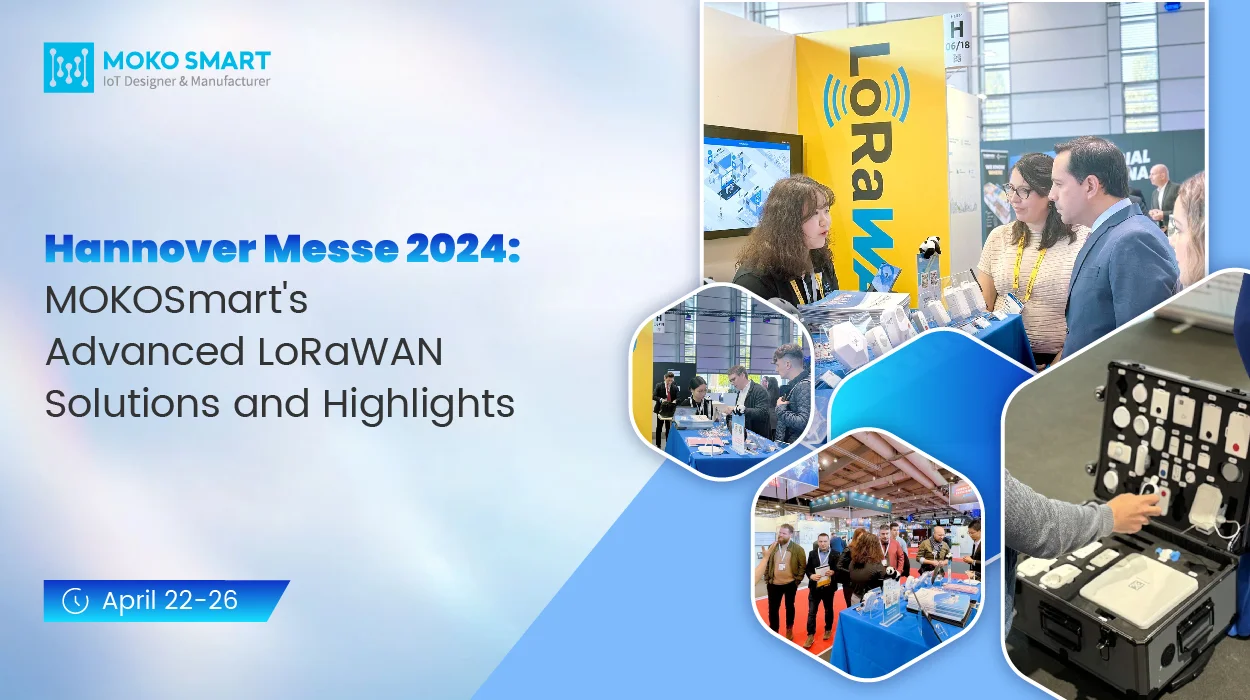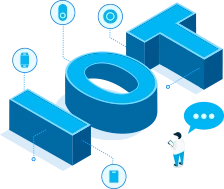Since the development of the Internet of Things, people have been constantly expanding the application of the Internet of Things. At first, it was used to facilitate daily life and improve work efficiency, and later, it was used to promote urban development. Until now, the IoT for pet tracking devices solution has been gradually promoted.
The solution involves pet tracking devices, pet health apps, door sensors and smart socket connection systems. We have extensive expertise in developing IoT solutions with software and hardware developing, and are well informed about the changing needs and expectations of our customers for pet applications as we are constantly observing the dynamics of this market.
Pet market report
The global pet care IoT platform market is worth $5.64 billion in 2021, according to Insight Ace Analytic. It is projected to reach $24.72 billion by 2030, representing a compound annual growth rate of 17.90% over the forecast period. In Europe and North America, there are nearly 300,000 pets with IoT pet tracking devices. It’s one of the emerging areas of the Internet of Things with 45 percent annual growth rate. Interestingly, about 32% of European households and 65% of North American households have at least one pet, with a combined cat and dog population of 310 million.
The Internet of things for pets allows people to observe, monitor, collect health information, track activity, feed and even play games with their pets even after leaving them. The growth of the global pet care IoT platform market is due to a number of factors, such as the increasing number of pet owners, increased government investment in animal healthcare development, increasing demand for pet management, and increasing preference for IoT services among pet owners.
As the COVID-19 pandemic forces many people to work from home, many people start to keep pets as a companion,, and those who do have pets have more time to focus on their pet lives. Additionally, the global pet wearables market exceeded $3 billion in 2019 and is expected to grow at a CAGR of 23% between 2020 and 2026. American pet owners spent $99 billion in 2020 on their furry, scaly and feathered friends.
![]()
In the following content, we will take an in-depth look at the IoT industry’s development of pet solutions, what IoT technologies enable pet tracking, and what solutions Mokosmart can offer in this area.
Different techniques of IoT pet tracking systems
There are a variety of IoT tracking systems on the market. Some people rely on GPS to track their pets, while others prefer radio frequency (RF) technology, Bluetooth and LoRa. Each type of pet tracking devices has pros and cons, and we’ve listed several different technologies below. You can decide which technology is best for you based on your conditions and needs.The factors include where you live, how good cell network service is in your area, what your budget is, what features you want, and how far away you’d like to be able to track your pet.
![]()
Radio pet tracking devices
Radio pet trackers use radio frequencies to locate your pet. A transmitter on the tracker sends a signal to your receiver telling you how far and in which direction your pet is. There’s no need to rely on cell towers, so if you live in a more remote area, then this technology can be one of your options. Radio pet tracking devices have a downside, though. They typically have a limited range, ranging from 100 feet to a mile, depending on the strength of the signal and the terrain you’re searching. Signals travel farther in open areas or buildings. If there are dense trees, buildings, or mountains, then the signal will bounce back, making it more difficult to locate your cat. And instead of getting precise coordinates like with a GPS tracker, you need to bring your transmitter to find your pet. In addition, transmitters are bulky so people usually only use them for positioning large pets.
Bluetooth pet tracking
Bluetooth pet tracker is a tracking device that attaches to a pet’s collar and communicates with the pet owner’s smartphone via Bluetooth. With a low-power battery, the coverage area is usually around 30 meters, making it suitable for indoor use. However, the range is limited, so if you want your pet tracking system to reach a larger market, this may not be the right one for you, as we all know pets want to travel outside.
Wifi pet tracker
WiFi can also be used for pet tracking devices. With WiFi, you can compare the signal strength of nearby wireless networks and use that data to work out your precise pet location. This method can be very precise, but relies too much on nearby wireless networks, and is not recommended if the signal is too poor or there is no network.
Pet tracking GPS
GPS is a solution for outdoor tracking that transmits location information to your pet guardian’s smartphone. It’s also a phone-based pet tracker that use cell towers to pinpoint their location, often within a few blocks.It covers a wide area and is only limited by GPS. The biggest drawback to satellite and GPS collars is that you can’t track your pet if there’s no clear satellite line to the location or if there’s very little cellphone signal. The monthly service charge is also an essential expense.In addition, it’s battery drains quickly due to frequent and large transmission.
LoRa tracking system
LoRa sends and receives data based on the new battery-saving LoRa Network standard for a wide range of applications both indoors and outdoors. Compared to GSM standard,the battery life of LoRa network is 5 times. LPWAN technology has been deployed worldwide and this low-power wide-area technology is the ideal solution for pet tracking LoRa GPS devices. With low data rates and less data transfer, its battery life is longer.
Hybrid pet tracking solution
As you can see, a single solution always has its pros and cons, so Mokosmart adopted a hybrid solution as an IoT pet tracking system, combining the pros and cons of the above technologies. These systems can use all of these technologies (Bluetooth, Wi-Fi, GPS or LoRa) depending on location.Hybrid systems are undoubtedly the best solution. GPS and LoRa can track pets outdoors, but when indoors, the tracker can be switched to WiFi or Bluetooth to save battery use. Additional functionality can be achieved by using accelerometer sensors that provide insight into a pet’s behavior by tracking its daily activities and health trends.
How can IoT be applied to pet technology?
As more and more people focus on how to better care for their pets, the standard of living of pets has been raised to a new level, and the demand for pet technology connected with the Internet of things is increasing.
-
Wearable pet devices
When it comes to IoT pet tracking devices,pet wearables are the most widely used technology.You can see that there are so many different types of wearable devices out there that are marketed for different purposes, and the market potential is huge. There are 2 categories of pet wearables, and the following are categorized according to their different uses:
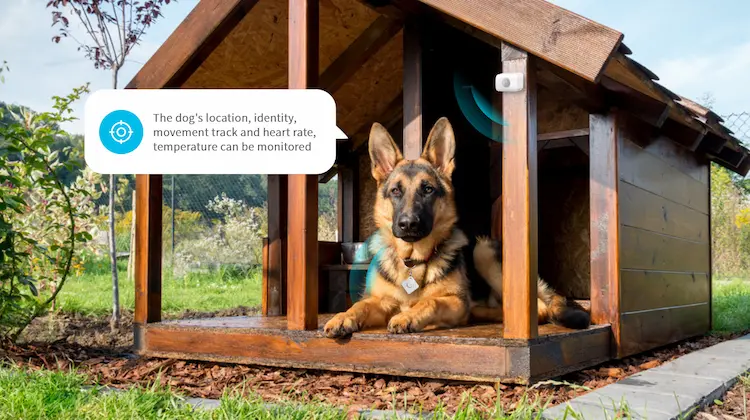
1. Location positioning(Smart pet collar)
Pets are always naughty, they like to run to any corner of the house to play hide-and-seek with you, or even run far away from home, they do not talk like human beings, and there is a great chance to be captured by the bad people outside. The pet’s location can be obtained by wearing a locator beacon, either using Bluetooth, GPS or LoRa. It depends on your budget and what you want to track.
2. Identification (Smart pet tag)
When you need to manage a lot of pets, you can put Bluetooth beacons on each one of them, and through background recognition, you can easily identify them and get other information you want. Like quantity, location, and activities.
3. Health diagnosis(Health pet tracker)
Besides keeping track of their animals, pet owners pursue their pets’ health more than anything else. To meet this need, the IoT market has launched solutions similar to human health monitoring. These programs are equipped with different sensors that can be used to monitor heart rate, temperature and activity. Pet owners can use these trackers not only to check their animals’ health, but also to improve training efficiency. It should be noted that the application of this solution is not limited to pet technology, but could also be applied to other livestock, such as cattle, sheep, horses and other farm animals.
4. Behaviour monitoring (Pet tracking device)
If you’ve ever opened the door to find a mess or an injured pet in your home, it’s tempting to wonder what your pet is up to when you’re alone. After installing a Bluetooth beacon, you can watch and analyze a heat map in the background to figure out your pet’s movements and prevent the next accident.
-
Pet supplies connection
IoT pet products include home devices, toys, feed troughs and smart pet doors. Such devices provide the following solutions when connected to the corresponding sensors or smart sockets:
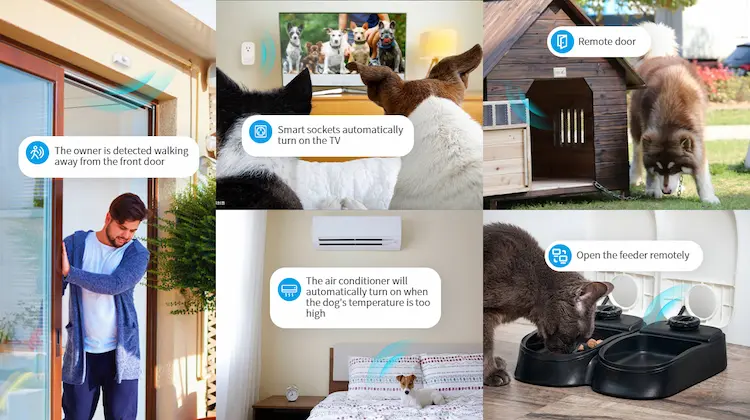
1. Pet entertainment
Pets are often lonely when their owners are away or busy, but if toys can connect to devices and interact with them, their lives can be enriched. For example, when the door sensor detects the owner leaving the door, a toy or TV in the house will be automatically switched on to attract the pet’s attention.
2. Comfortable pet life
The smart socket can receive signals from devices in the home and perform tasks, and when the temperature sensor detects that the pet is too hot, the cooling system of the air conditioner will be turned on. When the motion sensor detects that the pet becomes agitated, the speaker system will be turned on, and the owner can chat with the pet remotely to relieve the irritability.
3. Security protection
Many people have a small or fenced home for their pets. When we leave the house, a secure door can not only prevent pets from coming out and making a mess, but also prevent bad people or naughty children from getting in and hurting our pets.The online switch can be realized by connecting the door lock with a smart socket.In addition, a motion sensor can be installed in the pet enclosure. When there is no activity for a long time or the activity is unusually frequent, the background will send out an alarm. At this time, the owner can check whether there is anything abnormal about our pet.
4. Pet hygiene
Good pet hygiene needs to be domesticated. With the support of motion sensors, the owner can know the pet’s toilet habits and adjust the domestication. Motion sensors and temperature and humidity sensors can also be installed throughout your home, so you can see where you might accidentally end up in a pet’s bathroom.
5. Smart pet feeding
Some public places are not allowed to bring pets, so when the owner leaves the pet at home, how to feed the pet, and how to control the intake of the pet? Imagine how much easier pet owners’ workloads would be if your feeder could be controlled from your mobile device via a smart socket. Not only would you be able to turn your feeder on and off, but you could also turn your home cooker on and off to cook for your pet remotely.
6. Pet care platform
There are now a number of pet care centers or platforms that offer a variety of services that you can book on a mobile app, such as health monitoring solutions, grooming and even dog walking.
How pet monitoring works
About the working principle of pet monitoring system, the process below can give a you a clear idea:
- The first step is to install a smartphone with an app that connects to a tracker and displays the pet’s location. The next step is to record the movement and display it on a map. Once the activity is recorded, the pet’s habits can be discovered.
- With the Internet of Things and cloud computing, more capabilities can be added by using well-known management and monitoring principles. Key Performance Indicators (KPIs) and Threshold Crossing alerts (TCAs) are good examples. The distance of the imaging pet is recorded as a KPI, and TCAs are triggered and sent when the pet is too far from the specified base.
- Integration with social media is another interesting feature of pet tracking in the Internet of Things, as pet owners tend to create communities
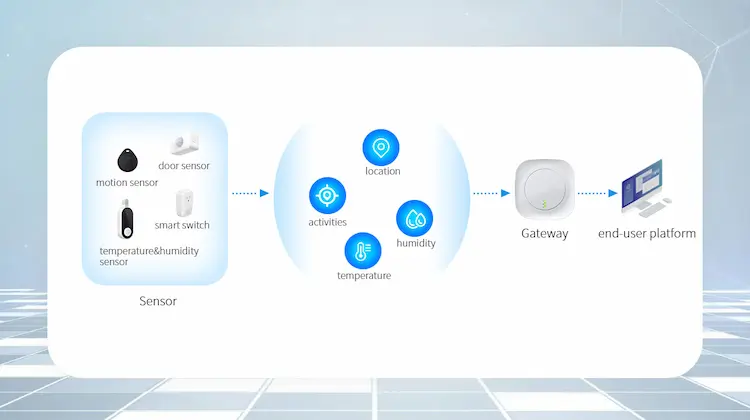
How much does pet tracking devices cost?
The price of a pet tracker can vary widely, usually from a few dollars to several hundred dollars. The price depends on the pet tracker brand and type of technology you choose, as different types of pet trackers have different advantages and disadvantages. Before deciding on a pet tracker, you must carefully weigh all the pros and cons, not just the price.
The price of Bluetooth pet trackers
In general, Bluetooth pet trackers are much cheaper than other types of pet trackers, starting at under $10 and costing you nothing extra. But you get what you pay for, and the low price reflects its low performance. Bluetooth pet trackers rely on Bluetooth technology and have a very small communication range and coverage, typically between 30 and 100 feet. Therefore, Bluetooth pet tracker is suitable for tracking pets only in the home of the pet guardian.
The price of an RF tracker
Radio frequency pet trackers tend to be more expensive than other products, usually costing around $100 and some hundreds of dollars, but fortunately there are no additional fees.The biggest benefits are the long life of the battery and the independence of the cellular network. However, they have a smaller communication range than GPS pet trackers, typically ranging from 400 feet to 2 miles. In addition, RF pet trackers are larger and heavier than other types of pet trackers, making them more suitable for large dog breeds and large animals.
The price of GPS pet trackers
GPS pet trackers are currently popular among pet guardians and are affordable. However, GPS prices for pet trackers vary widely, typically between $80 and $200. The biggest advantage is their huge communication range, and they can work at any distance within the range of a cellular network, making them ideal for people who travel a lot or live in areas where cell reception is spotty. In addition, they are durable, usually shockproof and waterproof, making them ideal for dogs and cats of different sizes. But be aware that mobile GPS pet tracking devices cost you extra money because they rely on mobile networks.
The prospect of pet tracking with IoT solutions
The pet IoT market is growing and will contribute more convenience and entertainment for pet owners in the future.
So if you in a market for developing pet solutions or adding new features based on your solution, then choose Mokosmart as your partner!We’re an IoT connectivity provider with pet tracking service,including developing sensors and devices, remotely monitoring and controlling applications using a managed connectivity platform. We can provide you with advice, analysis, development and maintenance of pet IoT products. Our main goal is to provide high-quality apps that are not just for pet tracking, but for other pet care features that can be added and have a valuable impact on your users. So don’t hesitate to contact us now!
